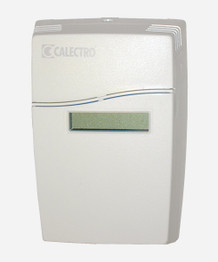E-SENSE
E-SENSE is designed to control ventilation by transmitting the measured carbon dioxide level to the system DUC (dataundercentral = data subcenter). According to the BBR 94 rules of The National Swedish Board of Housing, Building and Planning, the flow of outside air where people frequently spend time, should amount to at least 7 litres per second per person.
Assuming that the individuals in the room are adults doing sedentary work and that the outdoor concentration is 350 ppm, this flow corresponds to a carbon dioxide level of about 1040 ppm. According to The National Board of Health and Welfare (Socialstyrelsen) (SOSFS 1989:51) and The National Board of Occupational Safety and Health (Arbetarskyddsstyrelsen) (AFS 1993: 5) the carbon dioxide level can therefore be used as an indicator that the air flow, and therefore the air quality, is satisfactory. A carbon dioxide level below 1000 ppm should therefore be aimed at, according to both of these official bodies.
E-SENSE is a microprocessor-based carbon dioxide transmitter for room installation. E-SENSE senses the surrounding air and converts the result into an analogue signal.
Auto-calibration (ABC-function) is the key to maintenance-free operation. The precondition for this is a normal indoor environment, or applications in which there is some type of ventilation (at least a few times a week.)
Properties
- Infra-red technology (NDIR)
- Auto self-diagnostics
- Typical maintenance interval > 5 years
- 1 analogue output


















